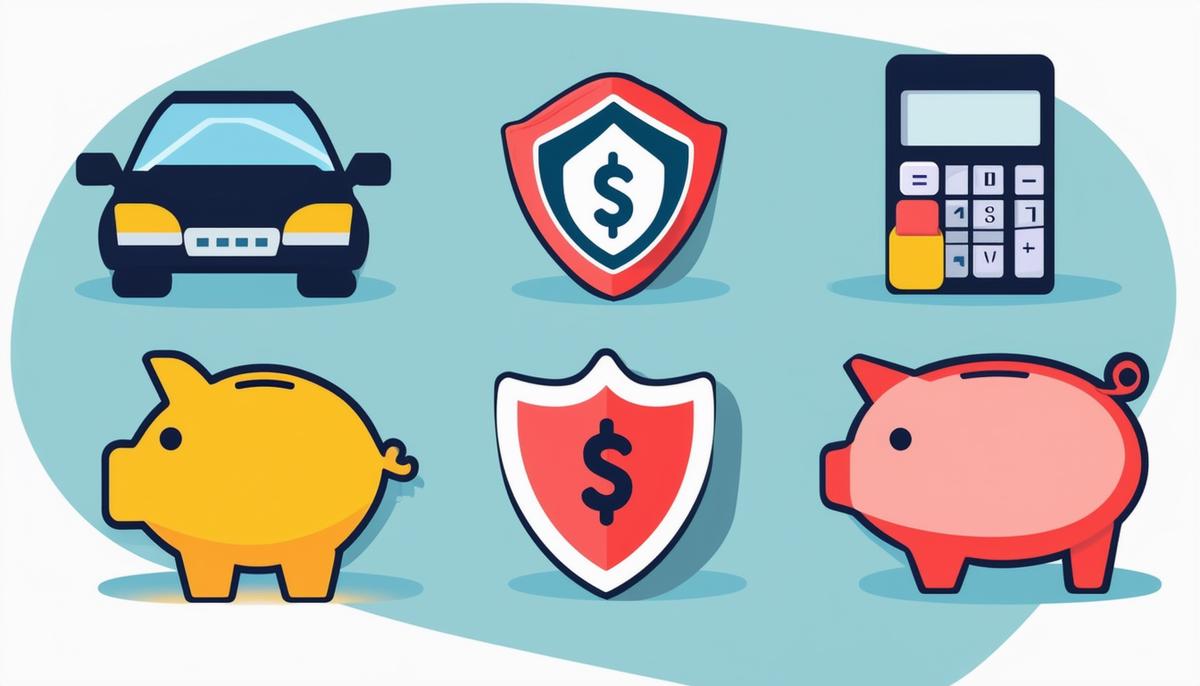Car Insurance Premiums Surge in 2024
Car insurance premiums skyrocketed by an average of 26% in 2024, pushing the national average cost for full coverage to a staggering $2,543 per year. This marks a significant rise from $2,014 in 2023 and $1,771 in 2022.
Several factors contribute to this surge:
- Repair costs have climbed due to inflation and supply chain issues
- Advanced technology in newer cars leads to higher repair expenses
- Increased traffic and accidents post-pandemic
- More frequent severe weather events causing car damage
- Rising auto theft rates
The Bureau of Labor Statistics notes that while overall annual inflation was 3.2%, car insurance rates spiked 20.6%. States differ in rate increases, with New Jersey and Missouri seeing hikes of 45.69% and 44.16%, respectively. Florida and California remain among the priciest states for car insurance.
Drivers in Louisiana spend the highest percentage of their income on car insurance at 6.53%, compared to Hawaii at 1.79%. In Detroit, drivers spend almost 8% of their income on car insurance, the highest in the nation.
Experts predict that these premium increases are likely to continue due to ongoing factors such as risky driving behaviors and increased accident frequency and severity.
Top Auto Insurance Companies Like State Farm, Auto Club and Allstate Have Seen Huge Rate Increases This Year
In 2024, many auto insurance policyholders are feeling the pinch as rates have surged by an average of 26%. Among the top insurers, State Farm and its subsidiaries have been at the forefront of these increases, securing seven of the top 10 premium hikes in the second quarter alone. Notably, State Farm Indemnity Co. received approval for a staggering 23.1% rate increase in New Jersey, resulting in a calculated premium change of $196.1 million, marking the second highest change for the quarter.
Meanwhile, the Interinsurance Exchange of the Automobile Club, under the Auto Club Exchange Group, reported the largest calculated premium change at $225.1 million. This change stems from a 6.9% hike that began impacting around 1.5 million policyholders from August 1, affecting both new and renewal business.
But State Farm isn’t the only company increasing rates. Allstate has implemented a 15.8% increase in Georgia, leading to a $179.9 million change in premiums. Liberty Mutual has also joined the ranks with a significant 25% hike in California, contributing to a $137.6 million premium change.
These substantial increases raise a critical question for consumers and policyholders alike—when will these escalating auto insurance rates stabilize? With the industry seeing such dramatic adjustments, many are left wondering how long this trend will continue.
State-by-State Insurance Rate Increases
States experiencing the most dramatic rate increases include:
- Louisiana: 32% increase in full coverage car insurance
- Florida: 29% increase
- Nevada: 31% increase
In contrast, Maine and Idaho saw more modest increases of 18% and 19%, respectively. California experienced a 23% rise but may face a further 54% jump by year’s end, according to an Insurify study.1
Wyoming stands out as an anomaly, with premiums only increasing by one dollar. Colorado and South Carolina both saw 30% increases in rates.
These variations in insurance costs across states highlight the impact of local factors such as weather patterns, urban congestion, and accident rates on premiums.
The significant differences in the percentage of income spent on car insurance underscore the financial strain higher premiums place on residents of states with steep hikes.
Strategies to Reduce Car Insurance Costs
In response to rising car insurance premiums, drivers are exploring various strategies to reduce costs:
- Increasing deductibles to lower annual premiums
- Dropping unnecessary coverage for older vehicles
- Taking defensive driving courses for discounts
- Policy bundling with home insurance or other types of coverage
- Regularly reviewing insurance plans and shopping for better deals
- Improving credit scores to qualify for lower rates
- Updating insurers about life changes that might affect premiums
- Reviewing coverage limits and ensuring adequate protection
Nearly half of all auto insurance customers are actively shopping for new plans, according to a J.D. Power survey.
Experts advise consumers to stay vigilant and proactive in managing their car insurance costs. By implementing these strategies and conducting regular policy reviews, drivers can better handle higher rates while maintaining adequate coverage.

- Insurify. Auto Insurance Trends Report 2024.
- J.D. Power. U.S. Insurance Shopping Study 2024.